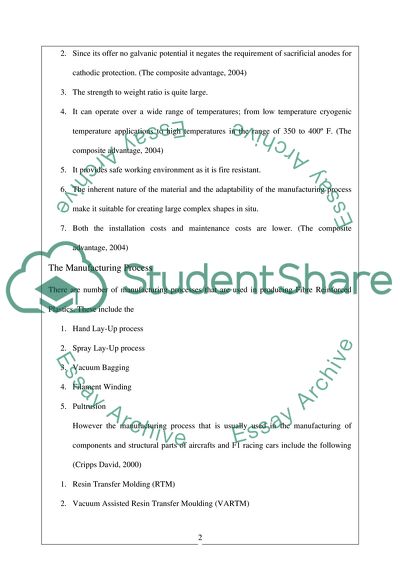Cite this document
(Fibre Reinforced Plastics in Aerospace and Formula-1 Research Paper, n.d.)
Fibre Reinforced Plastics in Aerospace and Formula-1 Research Paper. Retrieved from https://studentshare.org/engineering-and-construction/1750685-fibre-reinforced-plastics-in-aerospace-and-formula-1-the-manufacturing-process
Fibre Reinforced Plastics in Aerospace and Formula-1 Research Paper. Retrieved from https://studentshare.org/engineering-and-construction/1750685-fibre-reinforced-plastics-in-aerospace-and-formula-1-the-manufacturing-process
(Fibre Reinforced Plastics in Aerospace and Formula-1 Research Paper)
Fibre Reinforced Plastics in Aerospace and Formula-1 Research Paper. https://studentshare.org/engineering-and-construction/1750685-fibre-reinforced-plastics-in-aerospace-and-formula-1-the-manufacturing-process.
Fibre Reinforced Plastics in Aerospace and Formula-1 Research Paper. https://studentshare.org/engineering-and-construction/1750685-fibre-reinforced-plastics-in-aerospace-and-formula-1-the-manufacturing-process.
“Fibre Reinforced Plastics in Aerospace and Formula-1 Research Paper”, n.d. https://studentshare.org/engineering-and-construction/1750685-fibre-reinforced-plastics-in-aerospace-and-formula-1-the-manufacturing-process.


